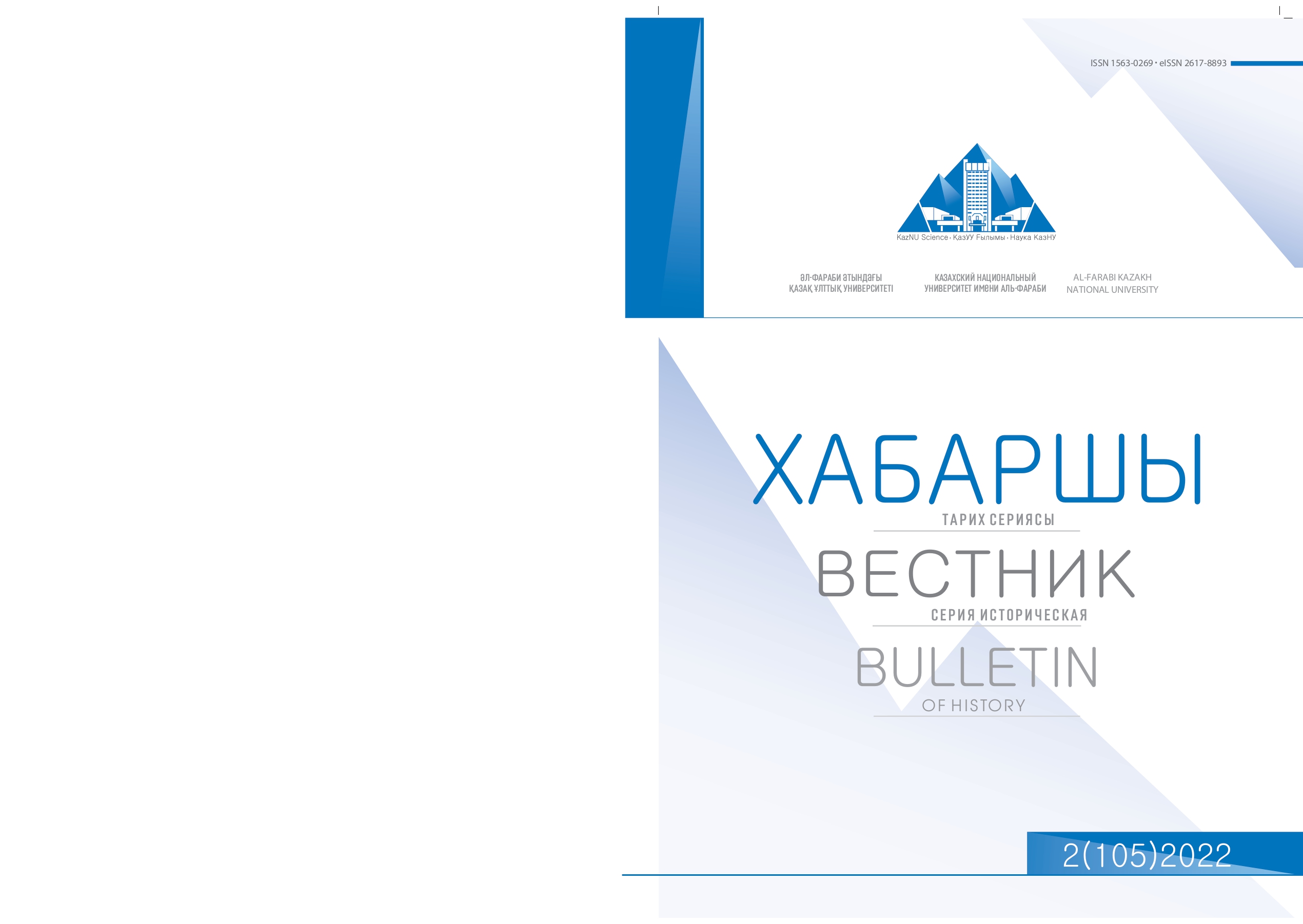The image of a fantastic beast in the art and mythology of the ancient Turks
DOI:
https://doi.org/10.26577/JH.2022.v105.i2.08Abstract
The article deals with the materials of the ancient Turkic burial mound from Eleke Sazy. Archaeological research in recent years, carried out in the valley, allowed us to determine the early medieval layer among others. The materials obtained during the study of funerary and memorial complexes have expanded the range of monuments of the early Middle Ages, the collection of material culture reflecting the original culture of the inhabitants of this territory has been replenished. The excavated monuments made it possible to raise the question of the settlement of ancient Turks on the territory of Tarbagatai. The topographical feature of the location of the kurgan group, where the object of study is located, is characterized. Archaeological data on the constructive properties of the mound are given, the clothing complex and the burial rite are analyzed. The results of the analysis of the skeletal remains of a girl buried in a gravel pit under the stone wall of a quadrangular fence are given. Special attention is paid to the creation of fine art in the form of a figurine of a winged fantastic beast from a burial. The object was intentionally damaged during the burial ceremony, which corresponded to the religious and mythological ideas of society. Analysis of the morphology, iconography and semantic load of the artifact allowed us to conclude that this object was most likely endowed with certain sacred properties and served as a talisman for the buried. In addition, the results of the analysis of the composition of some finds are given. Key words: archeology, ancient Turkic culture, East Kazakhstan, Tarbagatai region, Eleke Sazyvalley, kurgan, the image of a fantastic beast.




